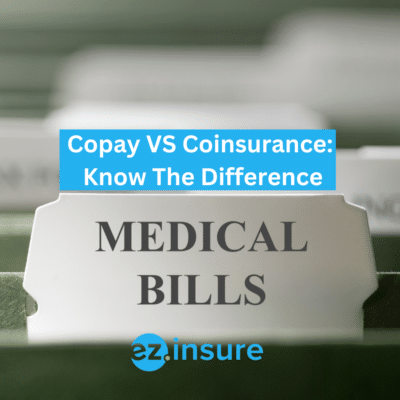
Waiving Employer-Sponsored Health Plans
Company-sponsored health insurance plans can be a considerable advantage for employees. Especially when the company pays for all or a portion of the employee’s health insurance benefit. However, it is possible that a person will not require the medical coverage supplied by their work. Employees are not compelled to partake in perks such as health insurance, which is the best part. There is no penalty for refusing coverage.
When an employee does not want their employer’s health insurance, they waive coverage. Employees can also forgo coverage for a family member who was previously covered under their plan. Employees can only opt out of coverage during specific time periods. Here are some examples of when employees can choose to forego coverage:
- When they first start their job and are initially offered coverage.
- During an open enrollment period, which takes place once a year and lets employees enroll, change, or opt out of coverage.
- If the company begins to offer a new plan.
- If someone has a change to their family such as a marriage, divorce, or birth. This qualifies them for a Special Enrollment Period.
The health insurance waiver is frequently considered as an employee perk since some firms offer to reimburse the employee for the financial value of the cost of insurance by waiving insurance. However, because most employers do not cover the entire cost of coverage, there is less of an incentive to avoid providing those benefits.
Keep In Mind
Signing a health insurance waiver may no longer provide any advantage in terms of employee perks in the form of a wage “increase” because many firms no longer pay for their workers’ health insurance benefits as they used to. However, because you will be covered via an alternate plan rather than the employer plan, the waiver may still reduce the costs of payroll deductions for your insurance.
Waiving College or University Health Plans
Universities frequently offer health insurance waivers. Students who are already enrolled in comparable or better health insurance plans than those given by their college or university typically have the option of waiving the health insurance by completing a health insurance waiver form and presenting proof of comparable coverage elsewhere. The submission deadlines for these waivers correlate to school terms. This is a common choice for students because they are frequently covered by a family plan, and the cost savings from foregoing health insurance can amount to thousands of dollars each year.
Proof Requirement
You may also be required to give proof of the reason you seek to forgo health insurance coverage, depending on the organization or reason for your request. This is for the organization, business, or school that is providing you with the plan’s protection.
Before processing your health insurance waiver request, the organization may wish to confirm that you have adequate health insurance elsewhere. Health insurance waivers may need to be signed on an annual basis, and if your circumstances change, you may be required to notify your plan provider.
Why People Use A Health Insurance Waiver
There are numerous reasons why you might decide to forego your health insurance coverage, but before you do, consider the benefits of dual coverage or benefit coordination. If you have a lot of medical bills or specific needs, it may be more beneficial to use multiple plans. Always consider all of your alternatives. For example, you may wish to waive coverage if your employer’s or student’s health insurance plan is not necessary because you already have coverage via another plan. Other circumstances in which you may obtain a health insurance waiver include:
- Spousal Coverage – Individuals who are qualified for health insurance through their spouse’s employer may choose to forego their own coverage in favor of the spousal plan. This choice may be influenced by factors including cost, coverage options, or personal preferences.
- Government Programs – Individuals may be eligible for government-sponsored health insurance programs, but choose to forego coverage in specific instances. This could be because of a desire for private insurance, unhappiness with the government plan, or specific coverage needs that the public program does not meet.
- Alternative Options – Some people may have access to other insurance options, such as individual or family plans, and opt out of employer-provided coverage in favor of these options. Cost, coverage scope, and network preferences may all have an impact on the selection.
- Coverage Preferences – Individuals might have specific preferences regarding healthcare providers, networks, or types of coverage. Opting for a waiver allows them the freedom to choose a plan that aligns better with their preferences and needs.
Alternative Health Insurance Options
If you decide to pass on health insurance offered by your job or school and choose to buy individual health insurance it’s important to know your options. There are several types of plans that all cover care in different ways. So it’s easy to find a plan that fits exactly what you need.
Health Maintenance Organizations (HMO)
HMOs offer you the option of choosing from a local network of participating physicians, hospitals, and other healthcare providers and facilities. As part of these health insurance policies, you must choose a primary care physician (PCP) from this network. Your primary care physician (PCP) will get to know you and help you organize all of your medical care. They are also responsible for referring you to any specialists; without this recommendation, your HMO would not cover a specialist visit. Out-of-pocket payments for an HMO plan are frequently lower than those for other types of health plans as long as you stay in-network.
Preferred Provider Organization (PPO)
PPOs offer very vast networks of participating providers. So, you can choose from a wide range of hospitals, clinics, and other healthcare facilities and experts. Unlike HMOs, PPOs provide some coverage for providers outside of their network,. But not as much as they would for an in-network provider. Another significant distinction between PPOs and HMOs is that you are not compelled to select a PCP and can see a specialist without a referral.
Exclusive Provider Organization (EPO)
EPOs also provide you with access to a network of participating providers from which you can choose. The majority of EPO plans, with the exception of emergencies, do not cover care received outside of their network. As a result, if you visit a provider or facility that is not part of the plan’s local network, you will most likely be responsible for the full cost of services. You may or may not be needed to select a PCP depending on the plan. In either case, you will not need a recommendation from a PCP to see a specialist. As long as they are in the network of the plan.
Point of Service (POS)
PPOs and HMOs are combined in POS plans. A POS plan’s provider network, like that of an HMO, is often smaller than that of a PPO plan. And in-network care expenses are typically lower, as with a PPO. In POS plans, you must choose a primary care provider (PCP) from a network of physicians and other primary care specialists.
If you need to see a specialist, you must acquire a referral from a POS. However, like with PPO, you can choose to see in-network or out-of-network experts. However, if you visit an out-of-network provider, your part of the costs will be higher. And you will be responsible for submitting any claims if you visit a physician who is not in the plan’s network.
Health Reimbursement Arrangement (HRA)
An HRA, or health reimbursement arrangement, is a form of health expenditure account provided and owned by the employer. Because they own the HRA, your employer is the only one who can contribute to it. They can also determine if you can roll over unused cash into the next year. The money in it is used to pay for eligible expenses. Including medical, pharmaceutical, dental, vision care, and as defined by the employer.
The Bottom Line
Health insurance waivers give people the freedom to choose how they want to be covered for medical care based on their own needs and circumstances. Even though they give people some freedom. People who decide to not have coverage should carefully think about the risks and other options. In turn, employers and schools have to deal with the paperwork side of health insurance waivers. Making sure they follow the law and encourage open communication. The use of health insurance waivers is still a moving part of the larger conversation about healthcare access and personal freedom, even as healthcare changes.
There are numerous sorts of health insurance plans to choose from. So it all comes down to you: your requirements, your budget, and your overall health. When looking for the best plan, the greatest thing you can do is compare the features of various plans. As a result, you can obtain the most coverage for the least money. Even if you are normally healthy, health insurance is a vital component of life. You never know what can happen, and it’s always better to be cautious than sorry. To begin, enter your zip code into the box below or call one of our qualified representatives at 877-670-3557.













